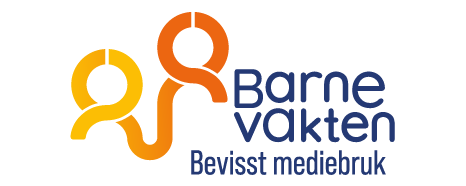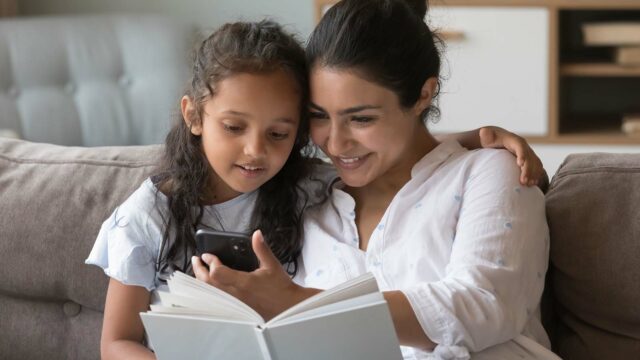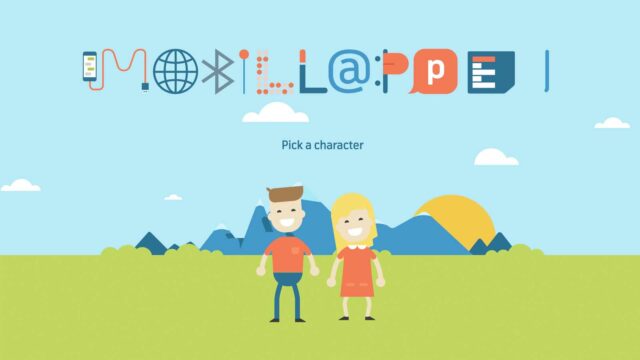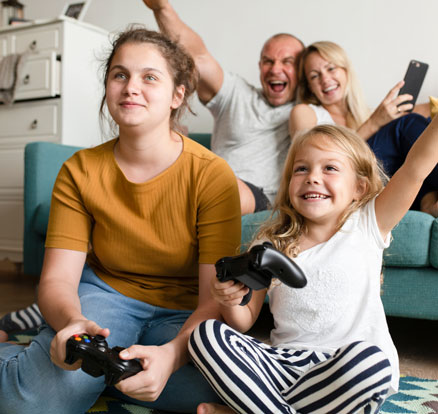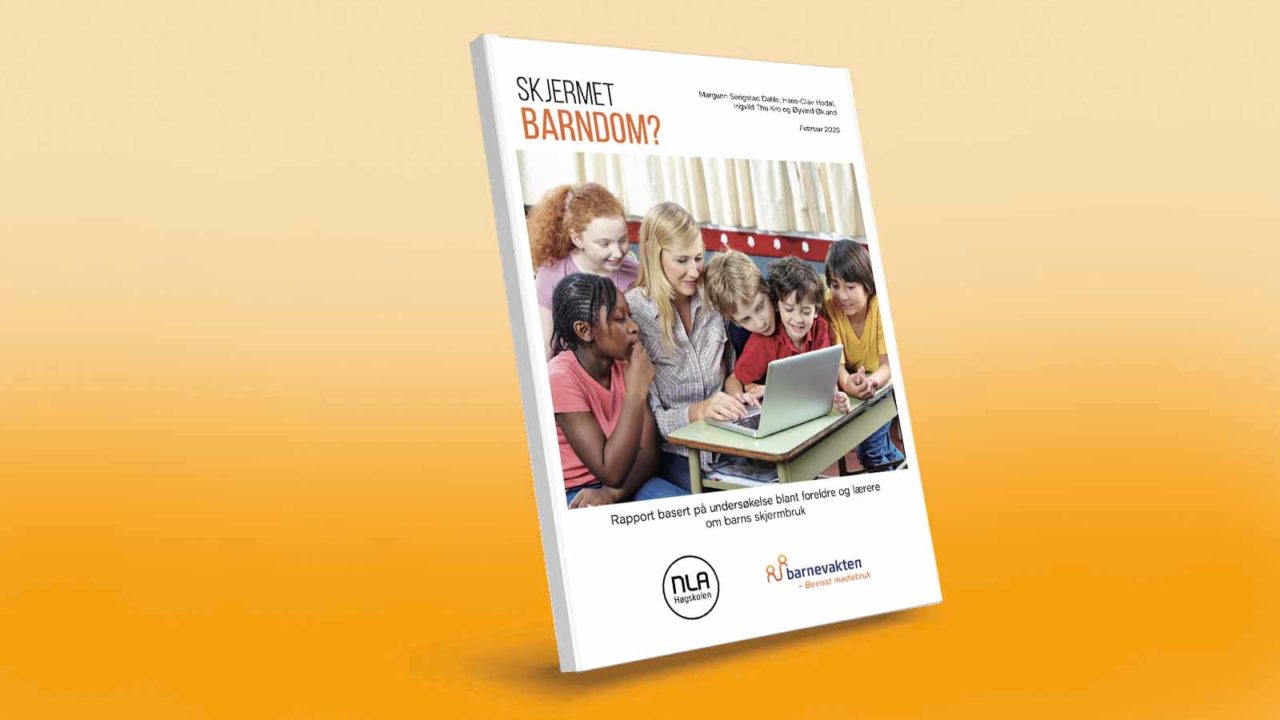
«Skjermet Barndom?» and Immigrant Parents
"Skjermet Barndom?" is a report covering two quantitative web-based surveys related to children's screen-use. One for the parents of primary school children and the other for primary school teachers.
Choose language in the Google-box below. Some translations may be flawed or inaccurate.

«Skjermet Barndom?» is a report covering two quantitative web-based surveys related to children’s screen-use. One for the parents of primary school children and the other for primary school teachers.
The report is made by a research group at NLA University College with Barnevakten as its client.
As an immigrant parent, I think the experience of the immigrant parents might be a little different. Therefore, I have taken into account the analysis of the parents’ data and tried to highlight where immigrant parents may have some different experiences.
First, I must say that among 10,427 respondents, of course, there are some immigrant parents. But since the statistic does not reflect any information about them, there is no way we can say how many they are or how their participation has affected the overall statistics.
Less economic ability to buy new computer equipment
From the survey we learn that most parents have experienced pressure from their children to obtain digital equipment for them (to a small extent 28 percent, to some extent 39 percent, largely 15 percent) and among them 65 percent of parents say that the pressure is on their children’s friends and classmates to have more or better digital equipment.
Children who have computer games as a hobby are happy to request new devices. Always there’s a new game that you can’t use with the old devices. Besides, there are many games that require a premium account. If you want to play, you have to pay for them.
As newcomers to the country, it is common for immigrant parents to have less economic ability than the Norwegian parents to buy those expensive devices and equipment for their children. But often the children don’t have an understanding about it. Therefore, this pressure can have a huge impact in the home environment.
Less technological knowledge
The survey shows that most parents and guardians pay attention to their children’s media use (to some extent 28 per cent, largely 42 per cent, to a very large extent 26 per cent). But for immigrant parents, it can be difficult to do the same. To monitor children’s media use, parents need to be up-to-date on both trends the children follow and the current technologies they use.
A similar situation may arise when it comes to setting screen time limits. In the study, it shows that nearly half the parents use technical measures like Google Family Link or restriction via routers to limit screen use for children at the elementary school and middle school. Parents with little knowledge of technology may have a hard time using these apps. Some may not even know that such technology exists.
The same also applies to Norwegian parents. But they often have better education than their immigrant counterparts, especially those who have come from developing countries. The statistics show that most parents have expertise in screen use, but still 8 per cent have little and 2 per cent have very little competence. When we think about the number, it is not small. Unfortunately, we have no information about the difference between Norwegian and immigrant parents regarding this, so we can’t say how big it is.
Children of immigrant parents often have better technology skills than their parents. In some families, children may therefore have control over their own media use if they want to. Perhaps less conflict More than half of the parents have experienced screen time as a source of conflict in the family – sometimes (43 percent) or often (16.2 percent). A parent with a child in 7th grade has commented on this issue:
«I’m worried. He says all his friends play as much as he does. Often he is aggressive when I say he has to finish playing. Often I feel powerless and despairing about situations.»
Another parent of a child in 9th grade has written:
«Have tried so many times, he forgets it, the child has no one to be with in his leisure time.»
This problem is very common. However, since the immigrant children often have a friend circle with immigrant backgrounds, they may have fewer friends to play with in their spare time, particularly if they live in an area with a few immigrant families.
However, screen use-related conflicts may be less in immigrant families than in the Norwegian ones. To have a conversation with the children about screen use or limiting their screen time, parents must be knowledgeable. If the children are given permission to use what they want and parents have no knowledge of it, there is a little chance that there will be conflicts. Sometimes parents may feel as powerless as the parent above and to avoid conflict stops restricting entirely.
Language – the hardest
In addition, language make make the job more difficult for immigrant parents. From the report on parents of primary school children, we see that most people use resource sites like Nettvett, Barnevakten, Slettmeg, Forbrukerrådet and many others. But all these resources are only available in Norwegian. To understand them, one must have a good understanding of the Norwegian language.
Language is also important for understanding how it works. It is not easy for the immigrant parents and almost impossible for those who have recently arrived in Norway. In such situations, immigrant parents mostly depend on the training their children receive at school. We see that from the statistics too.
While 32.2 per cent of respondents who have the highest completed education as grunnskole/ folkeskole/ realskole agree that ‘I am confident that my child gets good online education at school, including the use of social media’, parents who have completed education from university/college agree only 12.6 per cent. It gradually decreases with the higher education the respondents have. Although many immigrant parents may have higher education, the language prevents them from using the resources.
When it comes to home-school collaboration, almost half the respondents agree that in a small (27 per cent) or very small degree (18 per cent) they find that the school is helping them to raise awareness of their child on their screen use.
Among the respondents to this survey, Norwegian parents are the majority, we can infer. And we can also conclude that they have good Norwegian skills, because without that it would have been impossible for them to participate in the survey, which was in Norwegian. If Norwegian parents think about that they receive little help from school, what about immigrant parents who have lower Norwegian skills and are almost dependent on the education their children receive at school? Of course, it’s more difficult.
Important that the chain does not break
70 percent of respondents fully or partially agree that children under the age of 13 should not be allowed to be on social media because they are not mature enough. A parent of children in 5th grade, on which the topics most need to address, has written: «The biggest problem I, as a parent, experience around this is that other parents are lax with the screen time and age limits. It’s tough for my child to resist.» It might be the toughest thing to do for all the parents.
At school and in the friend circle, the age limit acts like a chain. Some children may be independent and have a good understanding of media use, which is why the parents may get lax with the screen time and age limits. However, it breaks the chain.
For immigrant parents of primary school children, same as the parent mentioned above, it is important that the chain does not break. But in this age of individualism, others have little to say, for example, if one parent allows their child to use social media before the age limit of 13 years and therefore breaks the chain. We just need to be knowledgeable and do what we think is good for our children.
A similar survey on immigrant parents
‘Skjermet Barndom?’ is a phenomenal survey covering almost everything about children’s screen use and parents’ view of it. Since it is quantitative, we have a good understanding of the situation in Norway. It will help both schools and parents to realize where they need to step up and do what is necessary. It may even help decision-makers make a decision in the future. But what’s missing in the report is the situation in the immigrant families.
Immigrant parents are also part of the Norwegian society, and they, too, need to control their children’s data usage at home. Since all the resource material is in Norwegian, it must be difficult for them to be knowledgeable, especially those who are relatively new in this country. I hope a survey of immigrant parents, or a similar study that separates data for immigrant parents, will help to understand their situation well. It will also help teachers and policymakers take the right step, if necessary.
Utviklet som en del av Erasmus+ prosjektet «TeachingTools».
